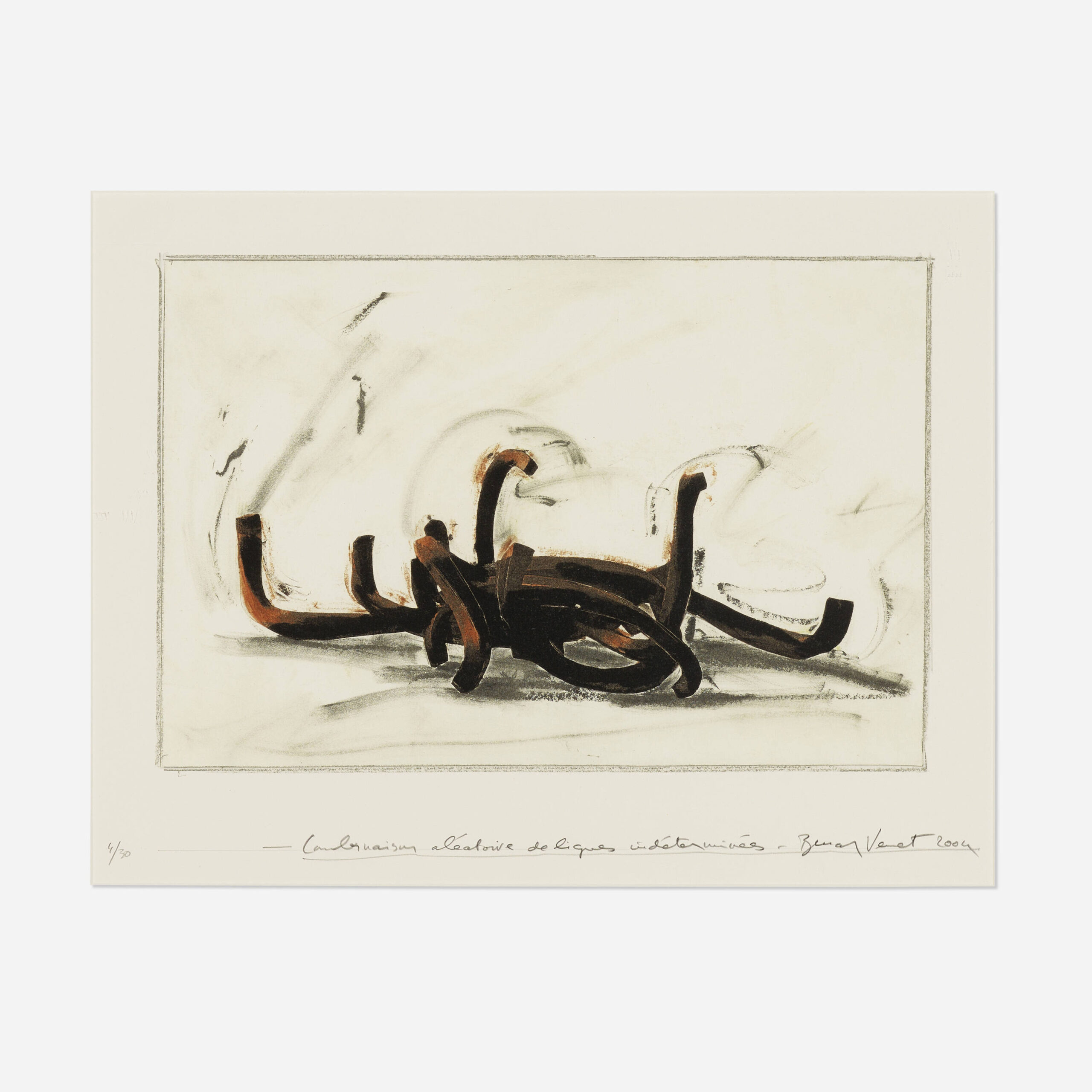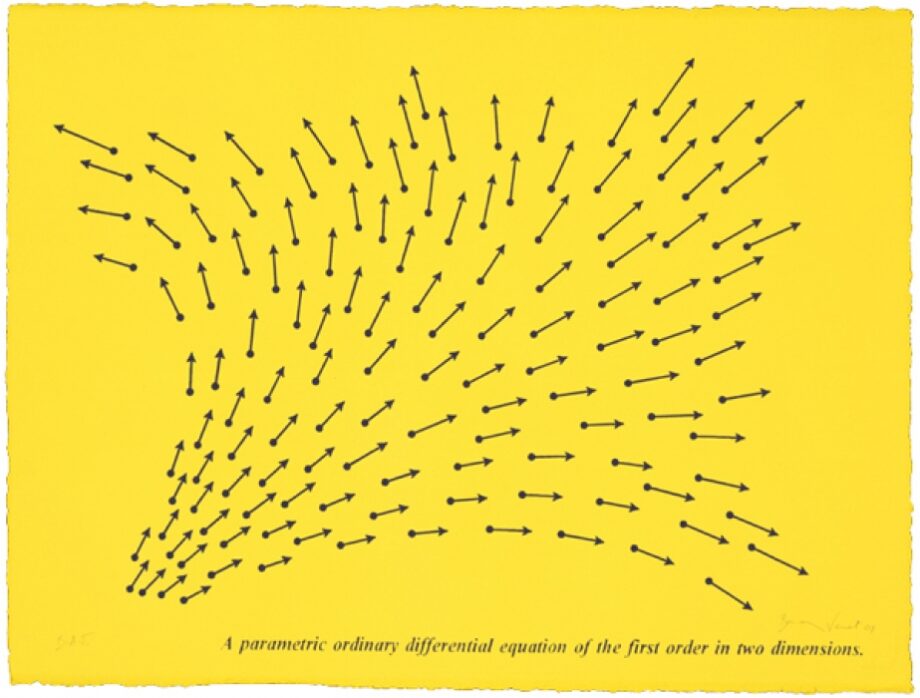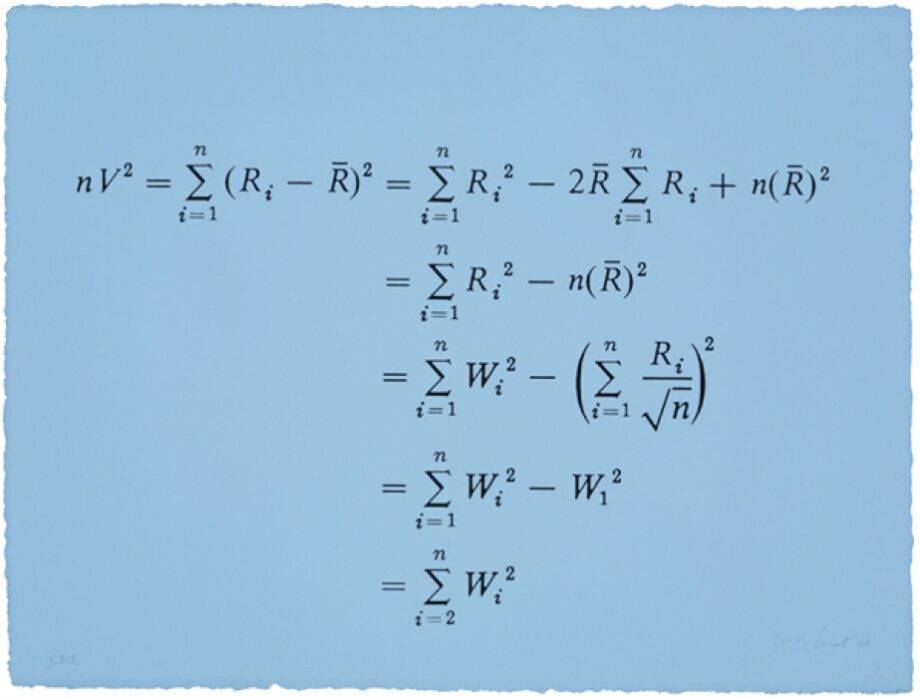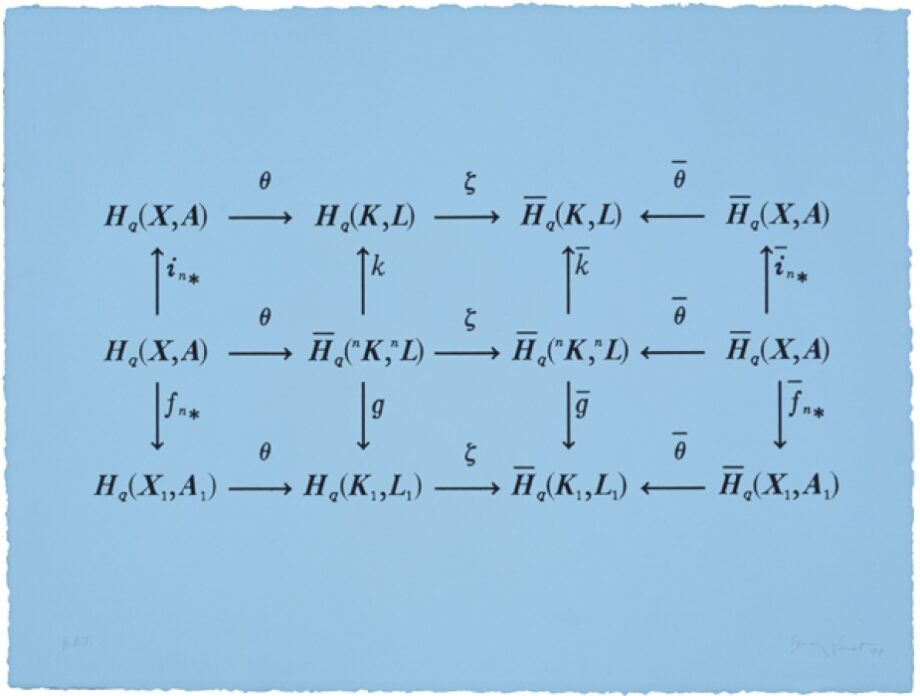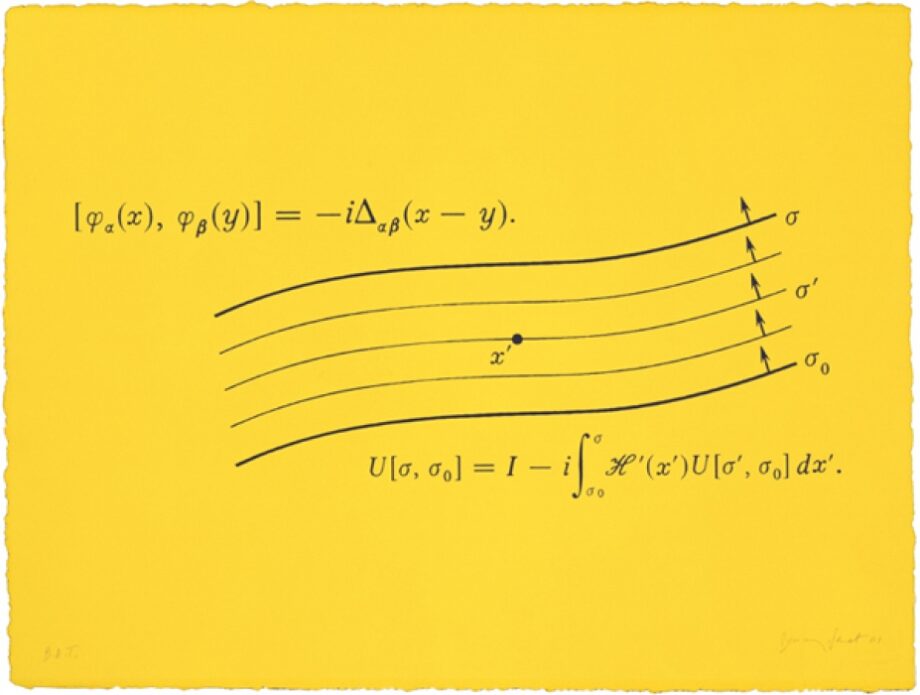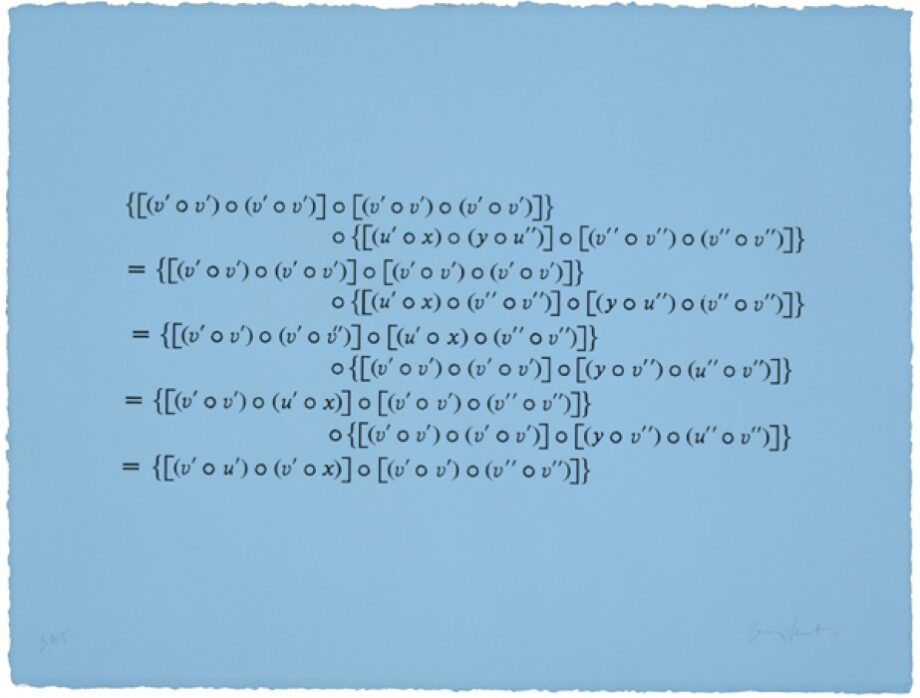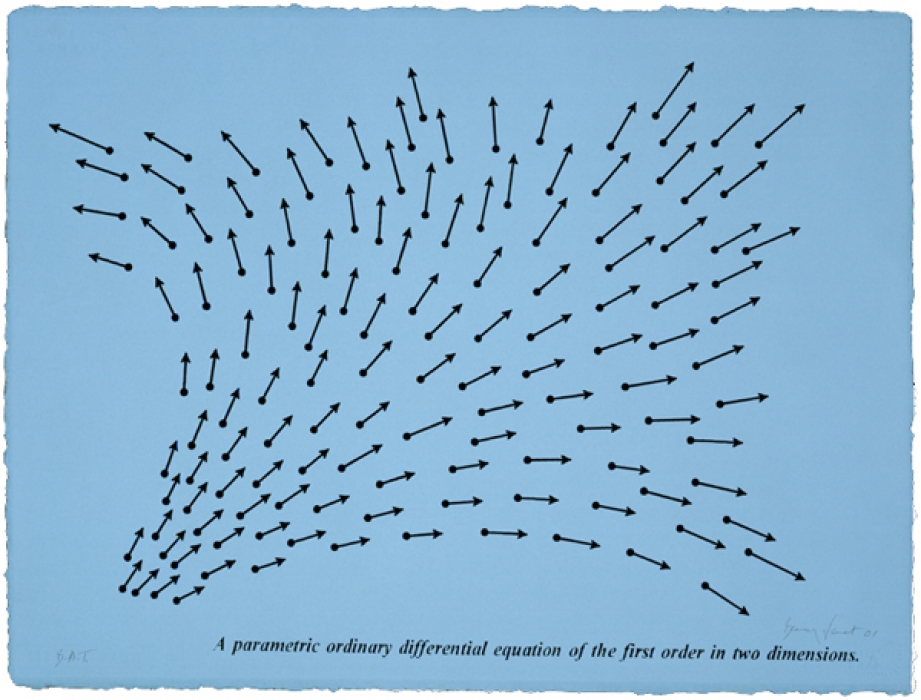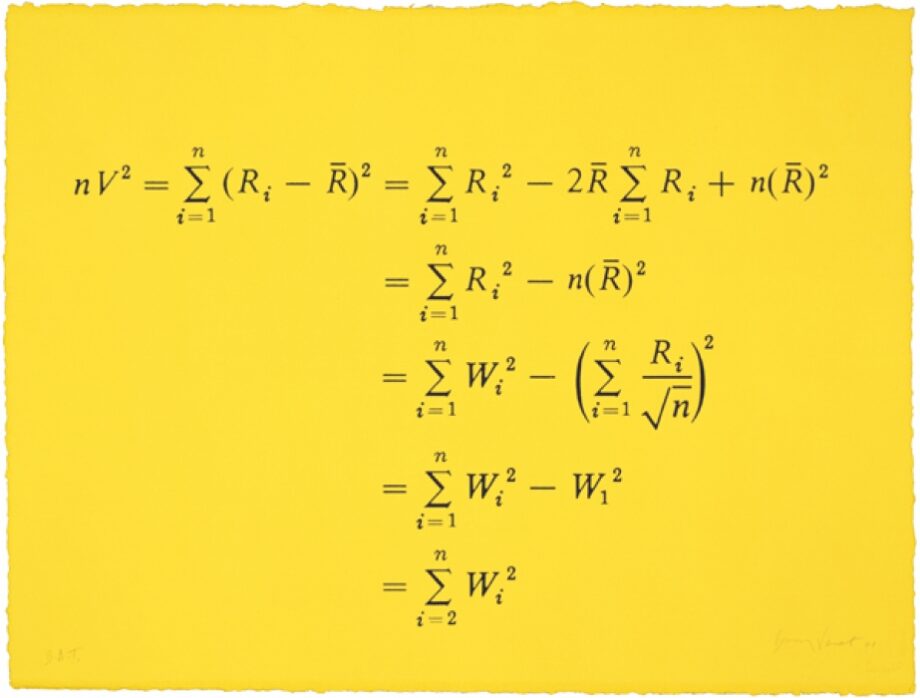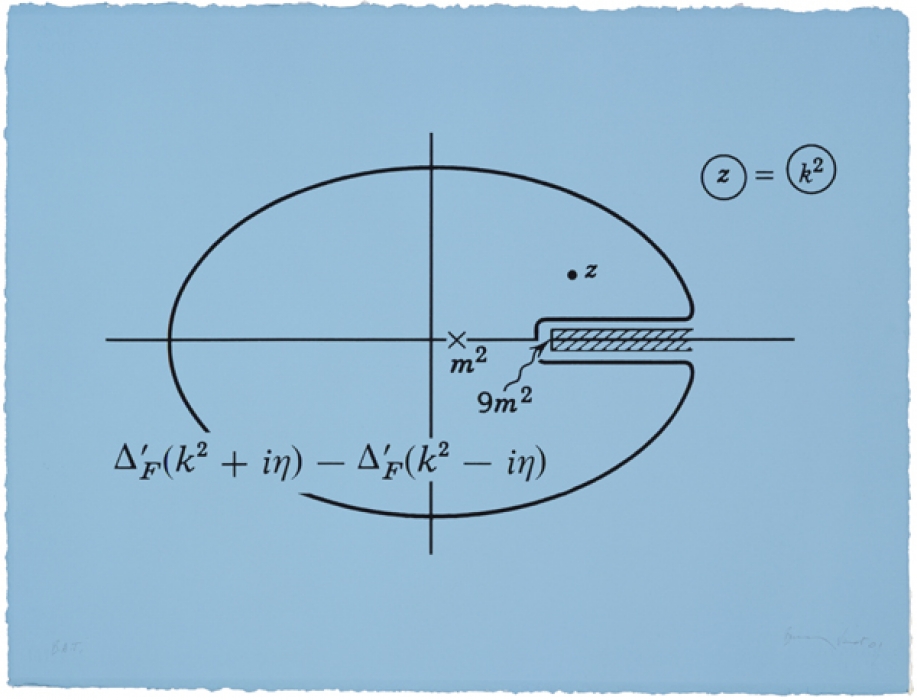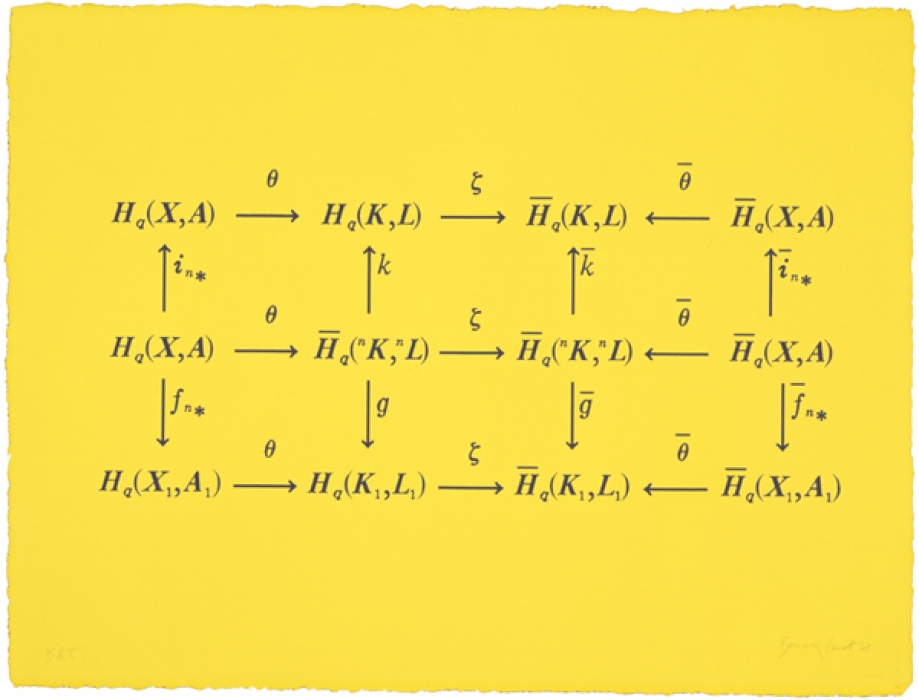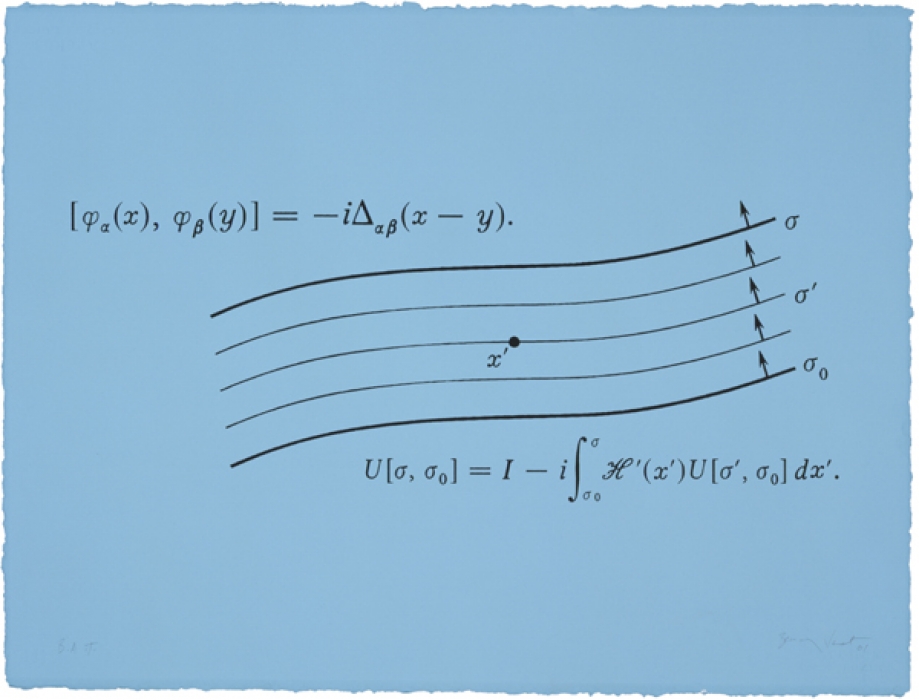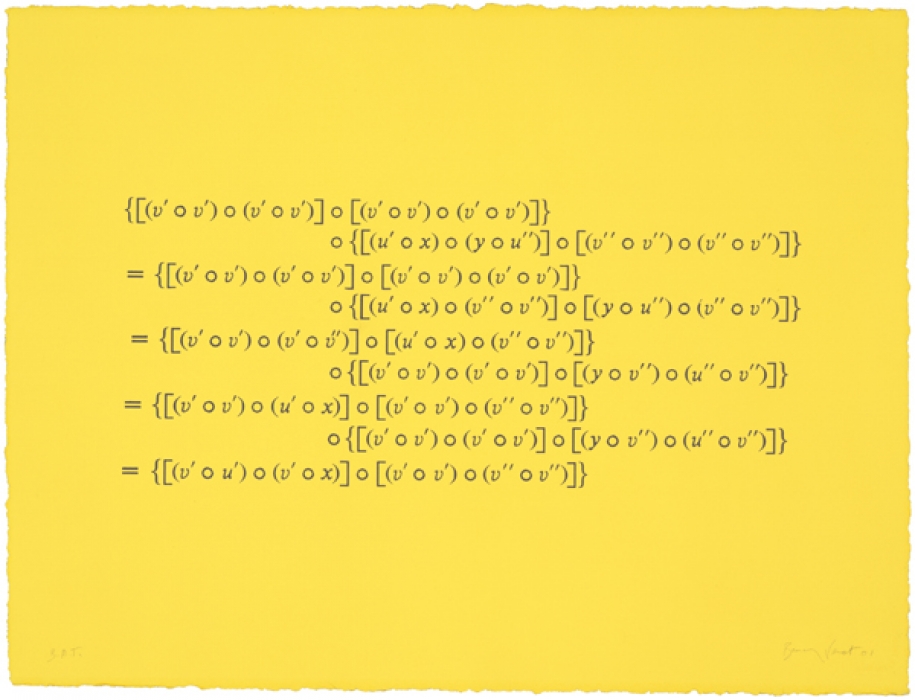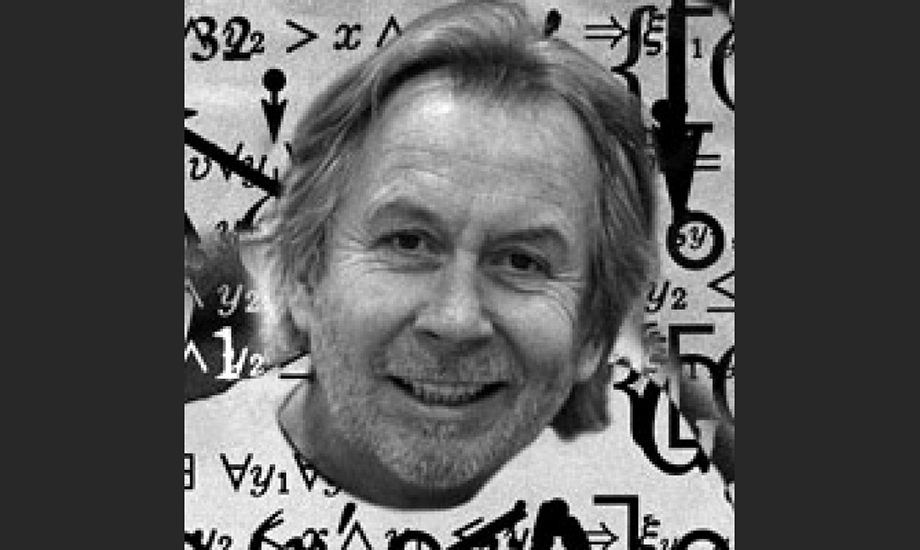
Bernar Venet
Bernar Venet is known internationally for his large-scale steel sculptures. French born, Venet has based himself between Europe and New York City since 1967. Exhibiting since 1968, his works have been shown in major museums across Europe, the USA and Asia.
Bernar Venet
Biography
Bernar Venet is known internationally for his large-scale steel sculptures. French born, Venet has based himself between Europe and New York City since 1967. Exhibiting since 1968, his works have been shown in major museums across Europe, the USA and Asia. Public sculptures have been commissioned and installed in equally as many varied locations including Cologne, Japan, Norway, Luxembourg, New York and Chicago, among others.
When Venet first went to New York at the age of 24 he encountered the works of Minimalist sculptors such as Donald Judd, Dan Flavin, Carl Andrew and Sol LeWitt, and was immediately drawn to their work through citing similarities to ideas he was already exploring in his own work. This spurred Venet’s art practice for many years – producing paintings, installations, drawings and wall mural pieces in steel, wood and coal. Today, Venet’s most recognised bodies of works are his steel Indeterminate Lines and Arcs. These sculptures are grounded in a Minimalist aesthetic, but also stem from his academic investigations into science and mathematics.
Bernar Venet seems to be the most intellectual of conceptual artists, but his intellectuality is a means to a romantic end – what Kant called “the feeling of the sublime.” Venet has had a life-long affair with mathematics, but the mathematical murals – his descriptive term – that are its grand climax, are more sublime than mathematical, or rather use mathematics as a springboard to the sublime. They are in fact an inspired rendering of what Kant called “the mathematically sublime.” (Donald Kuspit, Art: A Matter of Context, Writings 1975 – 2003: Bernar Venet, Hard Press Editions, 2004)
Venet’s sculptures are an exploration of material, form, balance and spatial perception. Monumentally sized, they hold viewers in awe of our insignificance in relation to these pieces of cold hard steel. However these works are not immune to being affected by their surroundings. These works change in appearance and perception each time they are installed in a new place, relating to their surrounding architecture and landscape. The power of this change is evident when viewing these works in such situations such as on the lawn in front of the Eiffel Tower, or in the middle of Park Avenue, New York.
Each Arc sculpture is engraved with its corresponding angle degree from which it derives, for example Arc 225. This locates the work within its rational and mathematics beginnings, and provides some reassurance when viewing these precariously balanced objects. On the other hand, the Indeterminate Lines seem to ask to be put back together into some picture or other. They represent the state of indeterminacy as an aspect of everything that has to do with flux. As Aristotle put it, “Nothing is true of what is changing – so anything in the process of flux is indeterminate. It’s as if the Arcs and Angles had started out as Indeterminate Lines; then, as the ontogenetic process advanced, they hardened or rigidified (at least for now) into a determinate state.” (Thomas McEvilley, Bernar Venet, Artha Benteli, 2002, p.35)
Venet’s primary studio is in New York; however his works are brought to realisation and produced at a foundry in Hungary. As is the nature of the material – steel is only malleable when heated to extremely high temperatures. The Arc series are produced by rolling the steel with machinery while the metal is hot, however the Indeterminate Lines require a more “hands-on” approach. Industrial clamps and tongs are used to hold the steel lengths while they are pulled and twisted into shape. “My work at the factory is a game of natural constraints between my intentions and the material itself. Each orients the other and is orientated in its turn. I propose directions but am at the same time directed by the steel bar which resists, and will not surrender to my will to dominate. In this game of concessions I must leave its autonomy at the helm.” (Bernar Venet, Bernar Venet, Artha Benteli, 2002, p.95)
Venet’s sculptures continue to tour Europe and North America, with recent exhibitions in Ceryg-Pontoise, France, Knookke-Heist, Belgium, downtown Chicago and at Gow Langsford Gallery, Auckland in early 2006. In 2004 Venet held three simultaneous solo exhibitions across New York City – at the Robert Miller Gallery, Jim Kempner Fine Art in Chelsea, and three large-scale Indeterminate Line pieces on the Park Avenue Malls.
In early 2005 Venet was awarded France’s highest decoration, Chevalier de la Legion d’Honneur, for his enhancement to the reputation of France through arts.
1958 – Studies for one year at the Villa Thiole, the Municipal Art School of the City of Nice
Exhibitions
2006
Gary Langsford Gallery, Auckland, New Zealand
Museum Würth, Künzelsau, Germany
Robischon Gallery, Denver, Colorado
Sculptures in Forest Park, St. Louis, Missouri
William Shearburn Gallery, St. Louis, Missouri
2005
Sculptures in the city of Cergy-Pontoise, France
Centre d’Art contemporain intercommunal d’Istres, France
Musée de l’Arles et de la Provence antiques, “Autoportraits, Réncontres de la Photographie,” Arles, France
Sculptures in the City of Knokke-Heist, Belgium
Guy Pieters Gallery, Knokke-Heist, Belgium
Vancouver International Sculpture Biennale, Vancouver, British Columbia, Canada
Sculptures in downtown Chicago, Illinois
Carrie Secrist Gallery, Chicago, Illinois
Evo Gallery, Santa Fe, New Mexico
2004
Sculptures in the city of Liège, Belgium
Galerie Jérôme de Noirmont, Paris, France
Galerie Haas & Fuchs, Berlin, Germany
Fischerplatz Galerie, Ulm, Germany
Robert Miller Gallery, New York
Jim Kempner Fine Art, New York
Sculptures on Park Avenue, New York
Musée Sainte-Croix, Poitiers, France
Evo Gallery, Santa Fe, New Mexico
Sculptures in downtown Denver, Colorado
2003
“Autoportrait,” Musée d’Art moderne et d’Art contemporain (MAMAC), Nice, France
“Sculpture,” Promenade des Anglais / MAMAC, Nice, France
“Equation/Saturation,” Galerie des Ponchettes / MAMAC, Nice, France
Stein Gallery, St. Louis, Missouri
Gallery Camino Real, Boca Raton, Florida
Schloss Herberstein, St. Johann, Austria
Centre d’art Patrick des Gachons, Frai?Nssé-des-Corbières, France
1961-1963, Hôtel des Arts, Toulon, France
“Poésie-Performance,” Éspace de l’Art Concret, Mouans-Sartoux, France
City of Luxembourg, Luxembourg
Galerie La Cité, Luxembourg
“Bernar Venet aux Tuileries,” Jardin des Tuileries, Paris, France
Galerie Scheffel, Bad Homburg, Allemagne
Englische Kirche, Bad Homburg, Allemagne
Chac Mool Gallery, West Hollywood, California
Eaton Fine Arts, West Palm Beach, Florida
Kennedy Park, Miami, Florida
2002
Galerie Academia, Salzburg, Austria
Galerie Art of this Century, Paris, France
“Poetry- Performance,” Centre Georges Pompidou, Paris, France
Musée National d’Art Moderne, Centre Georges-Pompidou, Paris, France
Ludwig Museum, Koblenz, Germany
The Fields at Art OMI International Sculpture Park, Ghent, New York
Robert Miller Gallery, New York
Anthony Grant, Inc., New York
Atlantic Center for the Arts, New Smyrna Beach, Florida
2001
Galerie Jérôme de Noirmont, Paris, France
Dorothy Blau Gallery, Bay Harbor Island, Florida
“Furniture,” Galerie Rabouan Moussion, Paris, France
Galerie Haas & Fuchs, Berlin, Germany
Galerie Hans Mayer, Berlin, Germany
2000
Eaton Fine Art, West Palm Beach, Florida
Museu de Arte Moderna do Rio de Janiero, Rio de Janeiro, Brazil
Centre d’Art Contemporain Georges Pompidou, Cajarc, France
Salle des Ecritures, Figeac, France
Teatro Nacional de Brasìlia, Brazil
Musée d’Art Moderne et d’Art Contemporain, Geneva (MAMCO), Switzerland
Galerie Kaj Forsblom, Helsinki, Finland
Museu Brasileiro da Escultura, Sao Paulo, Brazil
1999
Centro Cultural de Recoleta, Buenos Aires, Argentina
“Improvisé – Inchevé – Non-Formulé,” Mücsarnok, Budapest, Hungary
“Kunst im Bethmannhof,” Galerie Scheffel, Frankfurt, Germany
Art Affairs, Amsterdam, The Netherlands
Musée d’Art Moderne et d’Art Contemporain (MAMCO), Geneva, Switzerland
“Konstructiv Tendens,” Stockholm, Sweden
1998
Musée d’Art Moderne de St. Étienne, St. Étienne, France
“Venet in Schutzenmattpark,” Basel, Switzerland
Galleria Massimo Minini, Brescia, Italy
Galleria Karsten Greve, Milan, Italy
Galleria Persano, Torino, Italy
Centre Culturel Français, Torino, Italy
Chac-mool Contemporary Fine Art, West Hollywood, California
1997
Musée de Peinture et de Sculpture, Grenoble, France
Le Nouveau Musée / Institut de Villeurbanne, Lyon, France
Galerie Karsten Greve, Milan, Italy
Musée du Québec, Québec, Canada
Gallery Hyundai, Seoul, Korea
“Venet in Geneva,” Golf Club du Domaine Imperial, Gland, Switzerland
Art & Public- Galerie Pierre Huber, Geneva, Switzerland
Lipworth/Hartman International Fine Art, Boca Raton, Florida
1996
Lipworth/Hartman International Fine Art, Boca Raton, Florida
“Venet on Avenue Franklyn Roosevelt,” Brussels, Belgium
Galerie Karsten Greve, Paris, France
Fortant de France, Sète, France
Galerie Karsten Greve, Cologne, Germany
“Venet on the Rheingarten,” Cologne, Germany
1995
Hong Kong Museum of Art, Kowloon, Hong Kong
Alisan Fine Arts, Kowloon, Hong Kong
Shanghai Museum of Art, Shanghai, China
Galerie Karsten Greve, “Paris FIAC,” France
“Trajectoires divergentes,” La Lune en Parachute, Epinal, France
1994
Museo de Arte Moderno de Bogotá, Bogotá, Colombia
Galeria Tovar & Tovar, Bogotá, Colombia
“Venet on the Champ de Mars,” Paris, France
Total Museum of Contemporary Art, Seoul, Korea
Gallery Hyundai, Seoul, Korea
Boca Raton Museum of Art, Boca Raton, Florida
1993
Galerie Jacqueline Moussion, “Mobilier Sculptural,” Paris, France
Musée d’Art Moderne et d’Art Contemporain, Nice, France
Wilhelm Hack Museum, Ludwigshafen, Germany
André Emmerich Gallery, New York
Atelier 340, Brussels, Belgium
1992
Studio Oggetto, Milan, Italy
Gallery 360%, Tokyo, Japan
Person’s Weekend Museum, Tokyo, Japan
1991
Fred Hoffman Gallery, Los Angeles, California
Galerie Bjorn Ressle, Stockholm, Sweden
Galerie Eric Van de Weghe, Brussels, Belgium
Brent Sikkema Fine Arts, “Black, Black and Black,” (photography) , New York
Galeria Oscar Ascanio, Caracas, Venezuela
Vrej Baghoomian Gallery, New York
Galeria Theo, Barcelona, Spain
Galerie Daniel Templon, Paris, France
1990
Galerie Daniel Templon, “La ligne a` vif” (performance) , Paris, France
Vrej Baghoomian Gallery, New York
Castelli Gallery, New York
Galerie Pierre Huber, Geneva, Switzerland
Theospacio, Madrid, Spain
1989
Galerie Van de Velde, Anvers, Belgium
Galerie Elisabeth Franck, Knokke-le-Zoute, Belgium
Galerie Hans Mayer, Düsseldorf, Germany
Ronald Greenberg Gallery, Saint-Louis, Missouri
Galerie Daniel Templon, Paris, France
Centre d’art contemporain, “Noir/Noir 1963,” (photography), Troyes, France
1988
“Graduation” (contemporary ballet), Opéra de Paris, Salle Favart, Paris, France
Galerie Daniel Templon, “Chicago International Art Exhibition,” Chicago, Illinois
Daniel Templon, Galerie Une, Paris, France
Daniel Templon, Galerie Deux, Paris, France
Galerie Michèle Chomette, “Noir-Noir, Photos 1963,” Paris, France
Cantor/Lemberg Gallery, Birmingham, Michigan
Galleria Primo Piano, Rome, Italy
1987
Galerie Pierre Huber, Geneva, Switzerland
Quadrat Museum – Moderna Gallery, Bottrop, Germany
Wenger Gallery, Los Angeles, California
Castelli Uptown, New York
1986
Castelli Uptown, New York
Galerie Elisabeth Franck, Knokke-le-Zoute, Belgium
Daniel Templon, Galerie Une, Paris, France
Daniel Templon, Galerie Deux, Paris, France
1985
Galerie Denise René – Hans Mayer, Düsseldorf, Germany
Musée Départemental des Vosges, Épinal, France
Galerie Littmann, Basel, Switzerland
1984
Musée Sainte-Croix, Poitiers, France
Studio Marconi, Milan, Italy
Show with Dan Graham, Marianne Deson Gallery, Chicago, Illinois
Centre d’art contemporain de Châteauroux, Châteauroux, France
Galerie Denise René – Hans Mayer, “Basel Art Fair,” Basel, Switzerland
ARCA, Marseille, France
Musée d’Art Moderne, Villeneuve-d’Ascq, France
Galerie Daniel Templon, Paris, France
1982
Galerie Daniel Templon, Paris, France
The Bonlow Gallery, New York
Malinda Wyatt Gallery, Los Angeles, California
1981
Galerie Denise René – Hans Mayer, Düsseldorf, Germany
1979
ARCO Center for Visual Arts, Los Angeles, California
Hal Bromm Gallery, New York
Marianne Deson Gallery, Chicago, Illinois
Galerie Daniel Templon, Paris, France
1978
“Special Project at PS1,” Long Island City, New York
Galerie Denise René – Hans Mayer, Düsseldorf, Germany
1977
Bruno Bischofberger Gallery, Zürich, Switzerland
Musée d’Art et d’industie, Saint-Étienne, France
Galerie Daniel Templon, Paris, France
Galerie Nancy Gillespie – Elizabeth de Laage, Paris, France
Sonja Hennie – Niels Onstad Foundation, Hovikodden, Norway
Galerie Denise René – Hans Mayer, Düsseldorf, Germany
1976
Hopkins Center, Dartmouth College, Hanover, New Hampshire
La Jolla Museum of Contemporary Art, La Jolla, California
1975
Galerie Hetzler + Keller, Stuttgart, Germany
Galleria Nuovi Strumenti Arte Contemporanea, Brescia, Italy
XIIIth Biennale, São Paulo, Brazil
Museum of Modern Art, Rio de Janeiro, Brazil
Galerie Daniel Templon, Paris, France
Institute of Contemporary Arts, London, Great Britain
1974
Galleria la Seconda Scala, Rome, Italy
Galerie Daniel Templon, Paris, France
Galerie Daniel Templon, Milan, Italy
1973
Foksal psp Gallery, Warsaw, Poland
1972
Bruno Bischofberger Gallery, Zürich, Switzerland
Galerie Daniel Templon, Paris, France
Galerie Daniel Templon, Milan, Italy
1971
Galerie Der Spiegel, Cologne, Germany
X-One Gallery, Anvers, Belgium
Loeb Student Center, New York Univeristy, Peter Caws PhD. Lecture on: “Structure as a necessary and sufficient condition of Intelligibility” (performance), New York
Galerie Daniel Templon, Paris, France
Galerie Daniel Templon, Milan, Italy
New York Cultural Center (Retrospective), New YorkGalerie Der Spiegel, Cologne, Germany
X-One Gallery, Anvers, Belgium
Loeb Student Center, New York Univeristy, Peter Caws PhD. Lecture on: Structure as a necessary and sufficient condition of Intelligibility (performance), New York
Galerie Daniel Templon, Paris, France
Galerie Daniel Templon, Milan, Italy
New York Cultural Center (Retrospective), New York
1970
O.K. Harris Gallery, New York
Museum Haus Lange, Krefeld, Germany
Kunsthaus, Hamburg, Germany
Studio Santandrea, Milan, Italy
Denise René – Hans Mayer Editions, Düsseldorf, Germany
1969
Newark College of Engineering, Newark, New Jersey
1968
Judson Church Theater, “Relativity’s Track” (performance), New York
1966
Galerie Jacques Matarasso, Nice, France
1964
Galerie Ursula Girardon, Paris, France
